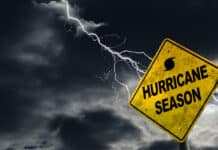The public has become increasingly apprehensive when it comes to dealing with issues surrounding radiation. Recent concerns relate to leaking water containment vessels at Fukushima. Then there are threats of retaliation if the U.S. strikes Syria. Terrorist groups likely already possess what is needed to make a briefcase nuclear device or enough radioactive material to use in a radiation dispersal device (“dirty bomb”).
According to county emergency management officials, many localities have an adequate, widespread net of radiation monitors. In fact, these officials claim the country is “upside down” on radiation monitoring, according to a story in the September 2013 Doctors for Disaster Preparedness Newsletter.
However, there are indications that the country’s network of preparedness is flawed. The U.S. Environmental Protection Agency (EPA) maintains about 100 fixed sites and also has some 40 portable devices in the RadNet system. While the devices are very costly, they are prone to failure and have serious limitations. Most are probably saturated at levels as low as 10 mrad/hr (.01 rad/hr or 0.1 mSv/hr). They could not distinguish between a level that causes no health effects and one that is rapidly lethal. As they sample the air periodically, they could miss fallout particles that settle rapidly.
In the 1990s, the federal government disposed of millions of Geiger counters, dosimeters, and survey meters that it provided to states during the Cold War. These were not replaced. Most current instruments are designed for interdiction (detecting radioactive material), not managing events after a detonation.
‘If nuclear terrorism occurs, hundreds of thousands of lives could be needlessly lost, either because of unwarranted panic or inability to measure dangerous doses,” states Jane Orient, M.D., president of Physicians for Civil Defense.
“Emergency responders need instruments with a broad enough range and an understanding of radiation effects at different levels,” she states. “Ideally, every fire station should have a robust, affordable fallout monitor on the roof that constantly transmits readings via the Internet.”
Facility professionals in vulnerable locations may wish to consult with the group to review emergency procedures in the event of an incident involving radiation.





















![[VIDEO] Collect Asset Data at the Speed of Walking a Building](https://facilityexecutive.com/wp-content/uploads/2024/02/maxresdefault-324x160.jpg)
Not a lot of research went into this article, because many of their facts are not accurate and their recommendations have been made by many other agencies and are currently being implemented.